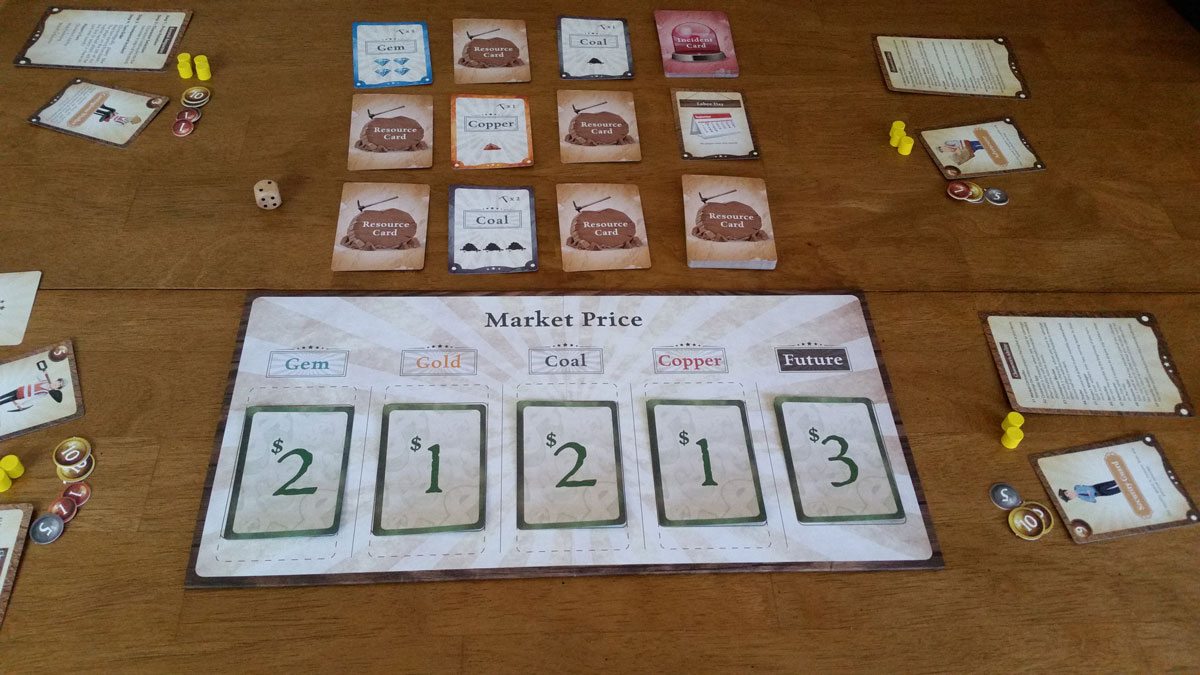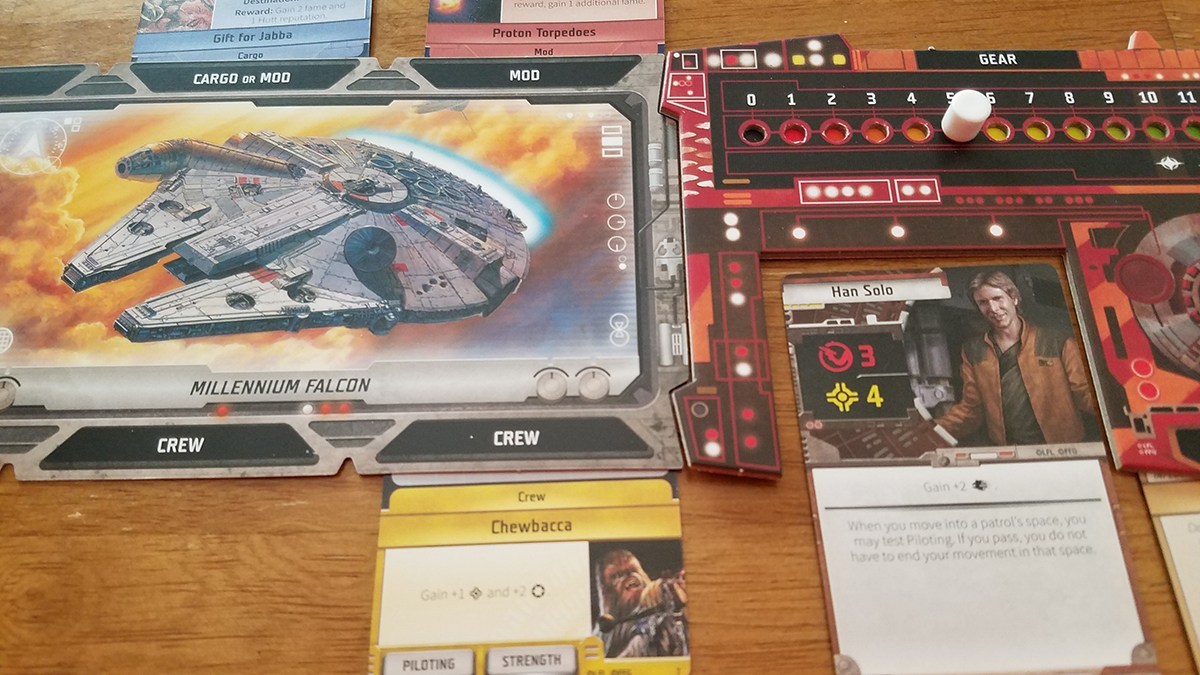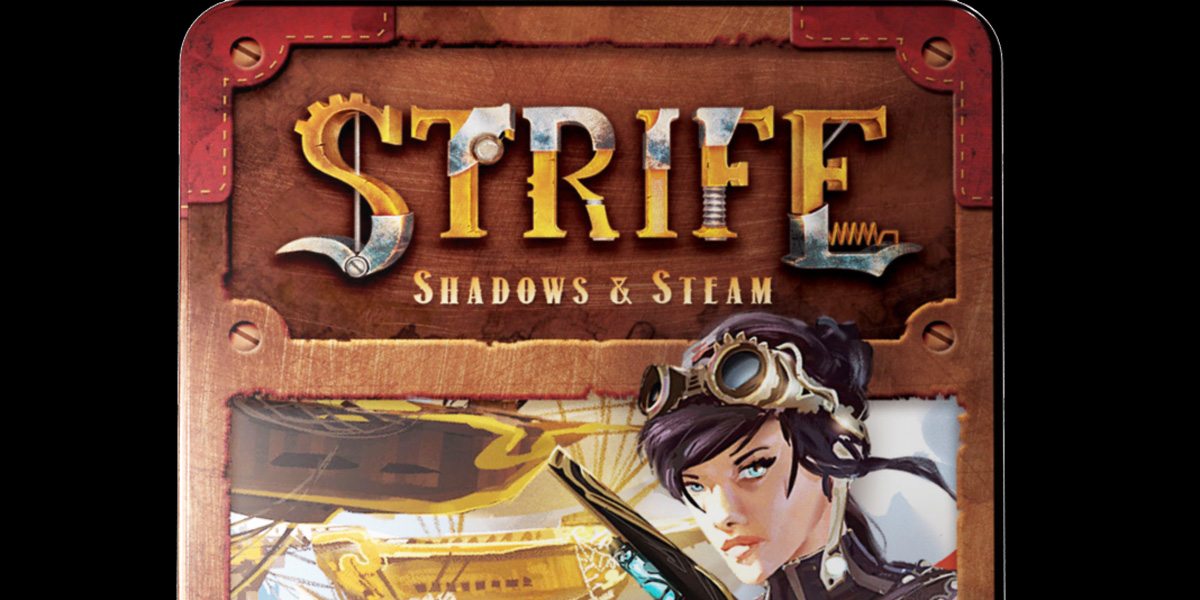
As CEO of a mining corporation, can you hire workers, operate mines, and most importantly play the market to make a bigger profit than you competitors? Find out in Mining Maniac.
At a glance: Mining Maniac is for 2-6 players, ages 10 and up. The box claims a game lasts 45-75 minutes, which is a considerable spread. I found that a six-player game lasted about 2 hours. It’s a surprisingly complex game from Hong Kong’s X-Axis Productions. The game can be had for a pledge of $38, plus shipping for anywhere other than Hong Kong.
New to Kickstarter? Check out our crowdfunding primer.
Components:
- 36 resource cards (9 each of gold, gems, coal, and copper)
- 24 incident cards
- 9 character cards
- 1 starting player card
- 5 price cards
- 1 market board
- 6 player’s aid cards
- 5 mineral tiles
- 28 worker tokens
- 1 die
- 70 cardboard game coins
I received a prototype copy to review. The quality of the components was excellent; unlike many Kickstarters, this one has been almost completely finished, and the company is only using the Kickstarter campaign to raise funds to produce the game. Planned stretch goals will improve the quality of some of the components, such as using heavier card stock for the cards, thicker cardboard for the money, and nicer worker pieces. But even if none of those goals are reached, the game looks great and plays well as-is.
The artwork on the cards is fairly straightforward but very clear. Often, mining-themed games run into problems where the materials all look pretty much the same, but here they decided to not make everything look like raw ore. Instead, each mineral is very clearly a different color card, with gold represented by stacks of bars, coal by a recognizable pile of rocks, and the like. I found it extremely easy to differentiate between them, which I appreciated.
How to play: Setup is quick and easy. You start by shuffling the incident cards and dealing out twelve, putting the rest in the box. This way, you do not know from one game to the next which incidents will come up. Next, you shuffle all of the resource cards and lay nine of them out, face down, in a 3×3 grid, stacking the rest in a draw pile. Then, you take the five price cards and deal them randomly into the five spaces on the market board, setting the initial prices of the minerals. Place the workers and money to the side to form a bank and you’re ready to go.
The starting player is determined by the person who last bought something made from gold, copper, or gemstones. We decided to count the gold iPhone one player recently acquired as close enough and gave him the starting player card.

That starting player then takes the nine character cards and randomly and secretly puts one face-down. Then, he selects a character from the remaining cards and passes the rest of the characters to the next player, who selects from what’s left over, and so forth. The final player will still have three cards, so they select one and put the rest face-down on the table. This way, no one can be sure exactly what characters have been chosen. Picking a character was definitely the hardest part of the first game, since it takes several rounds to really figure out how each character will impact the game, so the first selection or so is almost random.
Once all of the players have a character, the starting player (or whomever is closest to the incident pile) draws the top card from that deck, reads it aloud, and places it face-up on the table. The incidents impact all of the players for the entire round. They have either a negative effect, such as causing prices to drop or forcing players to discard cards, or positive effects like giving everyone free workers.
The starting player then begins calling out the characters by number, starting with one. If a player has that character, she begins her turn by revealing her character and performing the character’s action. This is where most of the strategy in the game comes into play. Carefully selecting and using a character can give you a huge advantage, but also impacts the turn order of the following round. It’s also easy to select a character only to find out that you cannot use it as planned; for instance, the Market Controller lets you change the prices of the minerals, but prohibits you from then trading on those minerals that turn. You cannot, for example, increase the price of gold and sell your gold on the same turn, so you have to set things up to maximize the price of gold on the following turn… provided that another player doesn’t draw a card on the following turn and drop the price before you have a chance to sell.
Once you’ve completed your character’s action, you roll the dice to reveal or hide mines. A roll of one turns over the cards along the top row, a roll of two turns over the middle row, and three turns over the bottom row, four turns over the left-most column, five the middle column, and six the right column. Here again was a surprising little twist. If the first player rolls a one, the top row of cards is revealed. However, if the second player rolls a five, you flip all of the cards in the middle column over, revealing the second and third cards in the column but hiding the top card, which had been revealed by the first player’s roll. Thus, if a mineral is revealed by one player, subsequent players cannot be certain that that mine will still be visible on their turn. It adds an element of luck, making many of the decisions in the game more interesting, and sometimes forcing you to buy something you didn’t really want because the thing you wanted got hidden.
After rolling, the player can then do two of three actions: hire workers, mine minerals, or sell. Hiring workers is straight-forward; for each dollar you pay to the bank, you get one worker (represented by small yellow wooden pegs, although planned stretch goals will turn those into meeples or metal hard hats). Mining basically entails buying a face-up card from the board; each card has a number of required workers printed on it, so you mine by returning that number of workers to the bank.
Selling involves discarding a mineral card you’ve already mined. This is another point where the game gets intriguing; the price of each mineral changes every round, based on the market board. But the change isn’t random–at the end of every round, all of the minerals shift one space to the left, so you can predict that while gold is only selling for $1 this round, it may be $3 next round. In that scenario, you obviously want to save your gold, but in doing so you have to hope that another player doesn’t decide to be the Market Controller and change the price of gold, or that an incident card doesn’t come up to force you to lose your gold. In many ways, the game’s simple mechanic nicely mirrors real-world market economics.
Once a player has completed his turn, the starting player calls out the next character number, and play proceeds around the table until everyone has gone. At that point, a new round begins, and we get the final interesting mechanic in the game: the starting player for the next round is the person to the left of whoever held the lowest-numbered character card in the current round. Thus, if you chose to draw the Market Controller (character number one), the player on your left will go first in the next round, so you will get the last draw of characters. It’s a nice touch that forces you to pause before choosing one of the lower-numbered characters, and it also solves a common problem with games that include a similar mechanic where one player always tries to draw the character that allows them to go first each round.
The Verdict
Mining Maniac is a deeper game than it appears at first, and turned out to be a lot of fun. The first time I played it was with a group of college students, most of whom were new to games like this, and they all enjoyed it a lot. My second play-through was with my family–all experienced gamers by now–so it works with both groups. It also nicely appeals to all age groups. The only real negative was that both groups felt that the full game–you’re supposed to play 12 rounds–took a very long time to play.
The fact that the version they sent for review was close to finished product was nice as well, as it allowed me to really get a feel for what the game will look and feel like. It should also significantly shorten the time to market following the completion of the Kickstarter.
All in all, the game is fun with some interesting twists that sets it apart from other market simulation titles.
For more information or to pledge on the game, check out its Kickstarter page.



